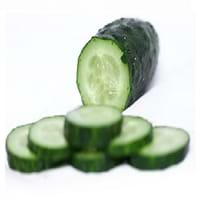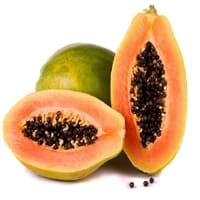Health Benefits
Arthritis treatment, Cancer prevention, Eczema treatment, Increases metabolic rate, Kidney stone treatment, Prevents constipation, Removes toxic metals, Treatment of alzheimer's disease
Arthritis prevention, Asthma treatment, Cancer prevention, Heart care, Prevents macular degeneration, Prevents rheumatoid
General Benefits
Anti oxidant properties, Anti-inflammatory properties, Controls blood pressure, Digestive aid, Strengthens bones, Treatment of sore eyes
Anti-inflammatory properties, Boosts immune system, Digestive aid, Healing of wounds, Maintains healthy cholesterol level, Strengthens bones
Skin Benefits
Heals sunburn, Hydrates skin, Skin rejuvenation, Skin revitalization, Treatment of dark spots, Treatment of skin diseases
Anti-aging benefits, Hydrates skin, Skin revitalization, Treatment of acne, Treatment of dark spots
Hair Benefits
Promotes longer and healthier hair, Protects hair, Regulates hair growth, Shiny hair
Good conditioner, Promotes longer and healthier hair, Softening mask, Treatment of dandruff
Allergy Symptoms
Breathing difficulty, Decrease in blood pressure, Diarrhea, Itching, Red rash, Runny nose, Sneezing, Vomiting, Watery eyes
Abdominal pains, Carotenemia on excessive consumtion, Latex Allergy
Side Effects
Stressed heart, Irritation, Swelling, Swelling around mouth, Throat swelling, Tongue swelling, Strained blood vessels
Allergic reaction, Skin problems, Possibly unsafe during pregnancy
Lactating Women
Not Available
Yes
Best Time to Eat
Along with meal, As a snack in the late afternoon, Eat the fresh ones, avoid mixing with any other foods, don't eat after meal., Strictly avoid empty stomach
As a snack in the late afternoon, Don't consume at night and before bed, Don't eat after meal
Vitamin B5 (Pantothenic Acid)
Vitamin C (Ascorbic Acid)
Vitamin K (Phyllochinone)
Phytosterol
Not Available
Calories in Fresh Fruit with Peel
Not Available
Calories in Fresh Fruit without Peel
Calories in Frozen Form
Not Available
Calories in Dried Form
Not Available
Calories in Canned Form
Not Available
Calories in Juice
Not Available
Calories in Jam
Not Available
Calories in Pie
Not Available
Type
Fruit vegetable, Melon
Melon, Tree fruit
Season
Spring, Summer
All seasons
Varieties
Armenian, English, Garden, Kirby, Lemon and Persian
Coorg Honey Dew, Pusa Dwarf, Pusa Giant, Pusa Majesty, Pusa Delicious, Pusa Dwarf, Solo, Ranchi, Taiwan-785 and Taiwan-786
Color
Dark green, Green
Orange, Yellow
Inside Color
White
Orange
Taste
Juicy, Watery
Luscious, Sweet
Origin
India
Mexico, Central America
Soil Type
Loam
Rocky, Sandy, Well-drained
Climatic Conditions
Warm
Warm, Without frosts
Facts about
- Outer waxy coating of cucumber can erase the pen writing.
- Pressing cucumber on roof of mouth for 30 sec will eliminate bad breath.
- It is made up of 96% water.
- English cucumber can grow longer than 2 feet.
- Papaya seeds show contraceptive effects in male monkeys.
- Their seeds are used as a replacement for black pepper in some nations due to peppery taste.
- Papaya is known by funny names like paw paw or papaw and the mamao.
Other Countries
Egypt, Indonesia, Iran, Japan, Russia, Spain, Turkey, Ukraine, United States of America
Brazil, Indonesia, Mexico, Nigeria
Top Importer
France
United States of America
Top Exporter
Spain
Mexico
Botanical Name
Cucumis sativus
Carica papaya
Synonym
Not Available
Not Available
Subkingdom
Tracheobionta
Tracheobionta
Division
Magnoliophyta
Magnoliophyta
Class
Magnoliopsida
Magnoliopsida
Subclass
Dillenhidae
Dillenhidae
Order
Cucurbitales
Brassicales
Family
Cucurbitaceae
Caricaceae
Species
C. sativus
C. papaya
Generic Group
Not Available
Papaya
Difference Between Cucumber and Papaya
We might think that Cucumber and Papaya are similar with respect to nutritional value and health benefits. But the nutrient content of both fruits is different. Cucumber and Papaya Facts such as their taste, shape, color, and size are also distinct. The difference between Cucumber and Papaya is explained here.
The amount of calories in 100 gm of fresh Cucumber and Papaya with peel is 15.00 kcal and Not Available and the amount of calories without peel is 12.00 kcal and 43.00 kcal respectively. Thus, Cucumber and Papaya belong to Low Calorie Fruits and Low Calorie Fruits category.These fruits might or might not differ with respect to their scientific classification. The order of Cucumber and Papaya is Cucurbitales and Brassicales respectively. Cucumber belongs to Cucurbitaceae family and Papaya belongs to Caricaceae family. Cucumber belongs to Cucumis genus of C. sativus species and Papaya belongs to Carica genus of C. papaya species. Beings plants, both fruits belong to Plantae Kingdom.









